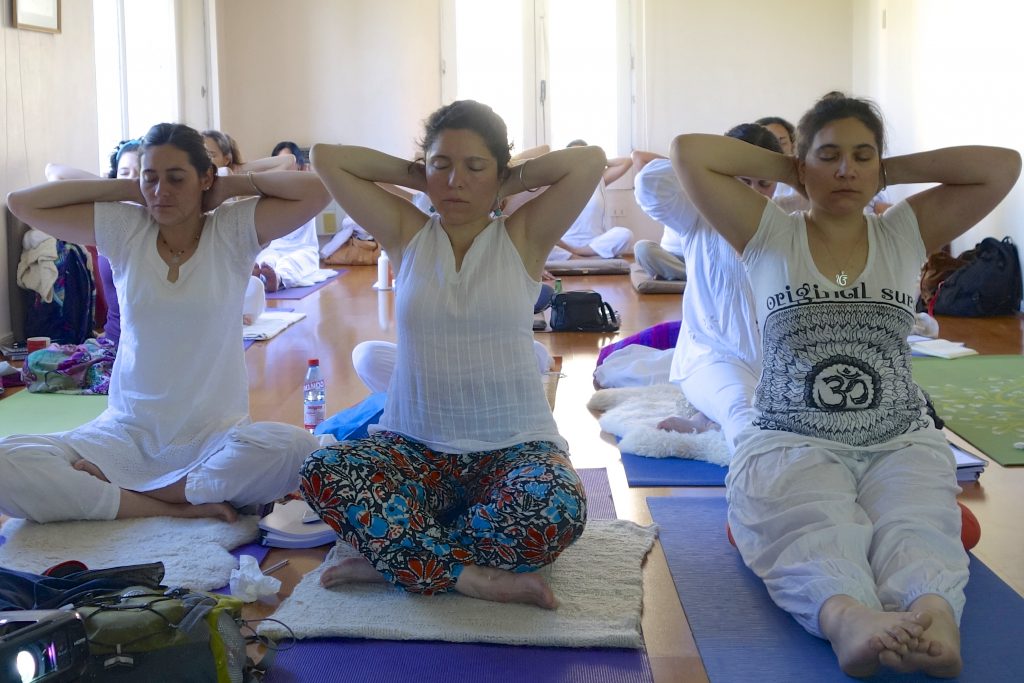A regular yoga practice can dramatically improve the health and well-being of women undergoing breast cancer treatment.
Breast cancer treatment with chemotherapy and radiation often results in fatigue, decreased vitality and increased inflammation. Inflammation can be measured by assessing the pro-inflammatory cytokines IL-6, TNF-α, and IL-1β. Chronic inflammation is associated with cancer growth and recurrence.
A controlled study of 200 breast cancer survivors who practiced hatha yoga for 90 minutes twice weekly for 12 weeks, found that yoga practice improved vitality, decreased fatigue and decreased IL-6, TNF-α, and IL-1β in comparison to a control group. The more frequently women practiced, the greater the increase in vitality and decrease in fatigue. Regular yoga practice has substantial health benefits due to its ability to decrease fatigue, increase vitality and decrease inflammation.
Emotional distress in breast cancer patients can delay recovery from surgery. One study of breast cancer patients compared a post-surgery 4 week yoga program (33 women) vs supportive therapy and exercise rehabilitation (36 women). The yoga group had a decreased duration of hospital stay, decreased days of drain retention and suture removal compared to controls. The yoga group also had a decrease in pro-inflammatory TNF-α levels following surgery.
A sample of 60 women with non-metastatic breast cancer were randomly assigned into either an experimental group or a control group. A 60-minute, twice-per-week yoga exercise was implemented for 8 weeks as the intervention for the participants in the experimental group. The control group received standard care only. Yoga reduced overall fatigue for the experimental group participants. The 8-week intervention did not significantly improve the levels of depression or anxiety.
Secondary arm lymphedema affects at least 20% of women after treatment for breast cancer, requiring lifelong professional treatment and self-management. In one study, participants were randomised to receive either an 8-week yoga intervention, consisting of a weekly 90-minute teacher-led class and a 40-minute daily session delivered by DVD, or to a usual care wait-listed control group. At week 8, the intervention group had a greater decrease in tissue induration of the affected upper arm compared to the control group, as well as a greater reduction in the symptom sub-scale for quality of life. There was no difference in arm volume of lymphedema or extra-cellular fluid between groups at week 8; however, at week 12, arm volume increased more for the intervention group than the control group.
Another study tested the hypothesis that an Iyengar yoga intervention designed for fatigued breast cancer survivors would lead to decreases in inflammation-related gene expression and circulating markers of pro-inflammatory cytokine activity. The yoga group showed reduced activity of the pro-inflammatory transcription factor nuclear factor kappa B (NF-κB), increased activity of the anti-inflammatory glucocorticoid receptor, and reduced activity of cAMP response element-binding protein (CREB) family transcription factors relative to controls (all ps<.05). There was also a significant intervention effect on the soluble tumor necrosis factor receptor type II (sTNF-RII), a marker of TNF activity; plasma levels of sTNF-RII remained stable in the yoga group, whereas levels of this marker increased in the health education group (p=.028). A similar, non-significant trend was observed for the interleukin 1 receptor antagonist (p=.16). This 12-week restorative Iyengar yoga intervention reduced inflammation-related gene expression in breast cancer survivors with persistent fatigue.
- Yoga’s impact on inflammation, mood, and fatigue in breast cancer survivors: a randomized controlled trial.
- Influence of yoga on postoperative outcomes and wound healing in early operable breast cancer patients undergoing surgery.
- The effect of yoga exercise on improving depression, anxiety, and fatigue in women with breast cancer: a randomized controlled trial..
- Yoga management of breast cancer-related lymphoedema: a randomised controlled pilot-trial
- Yoga reduces inflammatory signaling in fatigued breast cancer survivors: a randomized controlled trial.
- Life review interviews on the spiritual well-being of terminally ill cancer patients.
- Perspectives on spirituality at the end of life: a meta-summary.
- Psycho-spiritual well-being in patients with advanced cancer: an integrative review of the literature.
- Spiritual issues and needs: perspectives from patients with advanced cancer and nonmalignant disease. A qualitative study.
- Spiritual needs of persons with advanced cancer.




